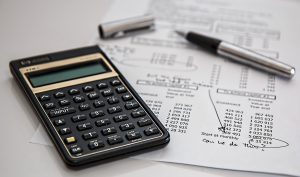
Assurance and verification are similar terms applied to the process of reviewing data for completeness and accuracy. This process is often conducted according to an accounting standard like ISO or ANSI and carried out by independent third parties who are commonly, you guessed it, accounting firms like PwC or KPMG. Third-party statements are important in both financial and non-financial reporting because they give readers confidence your report is accurate. But they also serve to spot problems in your report preparation methodology or it underlying data, which will in turn help you improve your overall sustainability program. Remember, assurance is just a professional opinion of how good your report is, and can easily come with 5 or 6 figure price tag. If this is your first foray into the assurance/verification process, it makes sense to start small. Begin by limiting the process to a narrow type of data, water for instance, as opposed to seeking assurance over every aspect of your sustainability report.
What’s the difference between alignment and assurance or verification?
Alignment means your sustainability report follows an established methodology — a rationale for how it was prepared, what was included (and excluded) and why. In other words, your report can be aligned to something, whereas assurance and verification are merely services designed to see how well you followed the rules.
What are some examples of these assurance/verification standards?
The two most common alignment standards are AA1000AS and ISAE3000. Most of the large financial auditing companies, like PwC, EY, and Deloitte, provide non financial data assurance services using these standards.
How is assurance different from verification?
Verification is only used when reviewing non-financial data and does not require an accredited professional. Assurance, on the other hand, requires the same methodologies and standards as financial data and must be performed by an accredited auditor.
Is it difficult to have data assured and verified?
Data assurance and verification is a continuous process which starts with a well defined process of collecting and disclosing data. The first step is to identify what data you would like to share and which alignment standard will be used for reviewing your data.
How does this affect my gresb response?
Check out the table below to see how assurance and verification can help increase your score on GRESB.
| GRESB Aspect | Opportunity | How to Improve |
| Policy & Disclosure (7.2) | Aligning sustainability reports with a standardized framework, such as GRI or INREV, establishes a template for non financial reports and provides auditors with a reference point for verification and assurance. |
|
| Monitoring & EMS (20.1-21.2) | Alignment with a framework will help ensure monitoring systems are up to date with the latest reporting trends, and properly collecting verifiable data. |
|
| Performance Indicators (24.2) | Third party review of sustainability performance adds credibility to reports, giving investors confidence that your non financial information is accurate. It is also worth a few extra points on GRESB and CDP. |
|